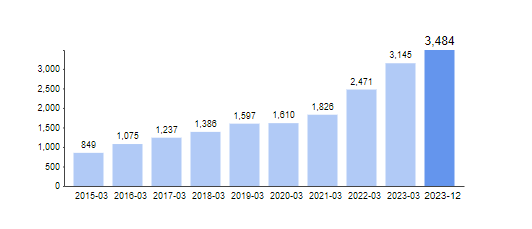20 Free Reasons For Choosing Ai Stock Prediction Websites
20 Free Reasons For Choosing Ai Stock Prediction Websites
Blog Article
Top 10 Tips To Evaluate The Market Coverage Offered By Ai-Based Stock Prediction/Analysis Platforms
Market coverage plays a significant aspect in evaluating an AI platforms for analyzing and predicting stocks which will determine your ability to access a vast variety of financial and asset markets. A platform with comprehensive market coverage will allow you to diversify your portfolio, discover possibilities across the globe, and to adapt to a variety of trading strategies. Here are 10 top tips to help you evaluate the market coverage offered by these platforms.
1. Evaluate Supported Asset Classes
Stocks - Make sure the platform you choose to use can provide coverage of the major markets for stocks (e.g. NYSE NASDAQ LSE HKEX) in addition to includes small-caps, mid-caps and large-caps.
ETFs - Check to see the platform you use supports the wide range of ETFs offering exposure to a variety of various sectors, regions, or themes.
Options and futures. Make sure that the platform is compatible with derivatives, such as futures contracts, options and leveraged instruments.
Forex and commodities. Check if the platform has forex pairs with base and precious metals, energy products, and agricultural goods.
Cryptocurrencies Make sure the platform supports popular cryptocurrencies like Bitcoin, Ethereum, and altcoins.
2. Check for Geographic Coverage
Global markets: Make sure that the platform covers all major global markets, including North America, Europe, Asia-Pacific and emerging markets.
Regional focus: Find out whether the platform is focused on certain markets or regions that align with your business interests.
Local exchanges: Make sure you know whether the platform supports regional or local exchanges that are relevant to your location or strategy.
3. Think about comparing real-time data to delayed data Delayed Data
Real-time Data: Make sure that your platform is equipped with real-time information for trading, and for making timely decisions.
Delayed data: Discover if you can get delayed data for free or at a reduced cost. This could be sufficient for investors who are looking to invest long-term.
Data latency. Check if the platform reduces the time it takes to process real-time feeds particularly when it comes to high-frequency trading.
4. Review the availability of historical data
Depth historical data: Check whether the platform is able to provide ample historical data (e.g. over 10 years worth of data) to analyze and backtest.
Examine the detail in the historical data.
Corporate actions: Determine if historical data accounts for dividends, stock splits as well as other corporate actions.
5. Make sure to check the market depth and place an order Books
Platforms must provide Level 2 Data (order-book depth) to improve price search and execution.
Spreads for bids: See if the platform displays real-time bid-ask spreads to ensure accurate pricing.
Volume data: Make sure that the platform includes extensive volume data that can be used to analyze liquidity and market activity.
6. Assess Coverage to determine Indices and Sectors
Major indices: Ensure the platform covers major indices (e.g., S&P 500, NASDAQ 100, FTSE 100) to benchmark and index-based strategies.
Sector-specific data: Check whether the platform offers data specific to certain industries (e.g., technology, healthcare, energy) to conduct a targeted analysis.
Customized indices. Find out if you are able to create or track custom indices according to your criteria.
7. Evaluate Integration with Sentiment Data and News
News feeds - Ensure that the platform integrates real-time news feeds for news that are market-moving from reliable (e.g. Bloomberg or Reuters) sources.
Sentiment analysis Check to see if your platform has sentiment analysis tools that utilize social media data, news sources, or any other data source.
Event-driven strategies (e.g. economic announcements, earnings announcements) Verify if your platform supports trading strategies based on events.
8. Make sure you have Multi-Market Trading Capabilities
Cross-market trading: Make sure the platform supports trading on multiple asset classes, markets and exchanges from a single interface.
Conversion of currencies: Find out if the platform allows multi-currency trading and automatic conversion of currencies for international trade.
Make sure you have support for time zones.
9. Check out alternative data sources
Alternative data: For unique insights, verify if your platform uses alternative data (e.g. satellite imagery Web traffic, satellite imagery card transactions).
ESG Data Find out whether there are any environmental, social, or governance (ESG data) included in the platform for socially responsible investing.
Macroeconomics data: For an analysis of fundamentals, make sure the platform is stocked with macroeconomic indicators like GDP (gross domestic product), inflation rates and interest rate.
10. Review Customer Feedback and Market Reputation
User reviews: Look for feedback from users to gain a better understanding of the platform.
The reputation of the market: Find out if there are any prizes or experts who acknowledge the platform for its broad coverage of markets.
Case studies: Look for testimonials or case studies that highlight the platform's success in particular assets or markets.
Bonus Tips
Trial period: Test the platform at no cost to see how well it covers markets and the types of data available.
API access: Determine if your platform's API allows access to market data in a programmatic manner to run custom analyses.
Customer Support: Ensure that the platform can offer support for any market-related issues or data problems.
Utilizing these guidelines you can accurately assess the coverage of AI software for stock prediction and analyzing trading platforms. You can then choose the trading platform that gives you the markets and information you need to make successful trades. You can increase your portfolio diversification and take advantage of new opportunities with the help of broad market coverage. View the most popular helpful hints for ai trading app for website tips including chatgpt copyright, ai investment advisor, ai stock trading bot free, copyright advisor, stock analysis tool, incite, getstocks ai, invest ai, best ai trading app, ai stock price prediction and more.
Top 10 Suggestions For Evaluating The Quality And Reliability Of Stock Trading Platforms Based On Ai
Assessing the scalability of AI-driven trading and stock prediction platforms is crucial for ensuring they can handle increasing data volumes, user demands, and market complexities. Here are 10 best suggestions for evaluating the scaleability.
1. Evaluate Data Handling Capacity
Tips : Find out whether the platform is able to process and analyze large databases.
Why: Scalable platform must be able to handle the growing volumes of data with no degradation in performance.
2. Check out real-time processing capabilities
Tips: Check how the platform can process real-time data streams such as live stock prices or breaking news.
The reason is that real-time trading decisions require real-time data analysis. Delays can result in lost opportunities.
3. Cloud Infrastructure and Elasticity
Tips: Make sure that your cloud platform (e.g. AWS, Google Cloud or Azure) and is able to scale resources dynamically.
Why: Cloud-based platforms provide the flexibility. They permit the system to be scaled down according to the need.
4. Algorithm Efficiency
Tip: Determine the efficiency of AI models employed to predict (e.g. Deep Learning, Reinforcement Learning).
Why: Complex algorithms can be resource-intensive, therefore optimizing them is crucial for scalability.
5. Learn about Parallel Processing and Distributed Computer Systems
Check whether the platform utilizes parallel computing or distributed computing frameworks.
The reason: These technologies speed up the processing of data and allow for analysis across multiple nodes.
Examine API Integration & Interoperability
Tips: Make sure to check the platform's integration with external APIs.
What's the reason? Seamless integration enables the platform to adapt to new trading environments and data sources.
7. Analyze User Load Handling
You can simulate user traffic and observe how the platform reacts.
Why? A scalable platform must maintain performance, even when users grow.
8. Assess the model of Retraining and its adaptability
Tips - Check how often the AI model is retrained and with what degree of efficiency.
The reason is that models must continuously change to keep up with the ever-changing market to ensure that they remain precise.
9. Check for Fault-Tolerance and Redundancy
Tip: Check that the platform is equipped with failover mechanisms and redundancy in the event of software or hardware malfunctions.
Why: Downtime can be expensive in trading, which is why fault tolerance is vital for the ability to scale.
10. Monitor Cost Efficiency
Tip: Consider the cost of scaling your platform. Be aware of cloud resources, such as storage of data and computing power.
The reason is that it should be at a price that is viable. This means that you must balance efficiency against cost.
Bonus Tip: Future-proofing
Make sure the platform can be able to adapt to changes in regulation and incorporates new technologies like quantum computing, or even advanced NLP.
Concentrating on these factors will enable you to evaluate the capacity of AI stock prediction and trading platform, and ensure that they are sturdy effective, efficient and prepared for expansion in the future. View the top a fantastic read about trader ai intal for more recommendations including ai copyright trading bot, trader ai, ai invest, ai for stock trading, best stock advisor, best artificial intelligence stocks, ai for investing, ai trading, best ai trading software, ai trade and more.